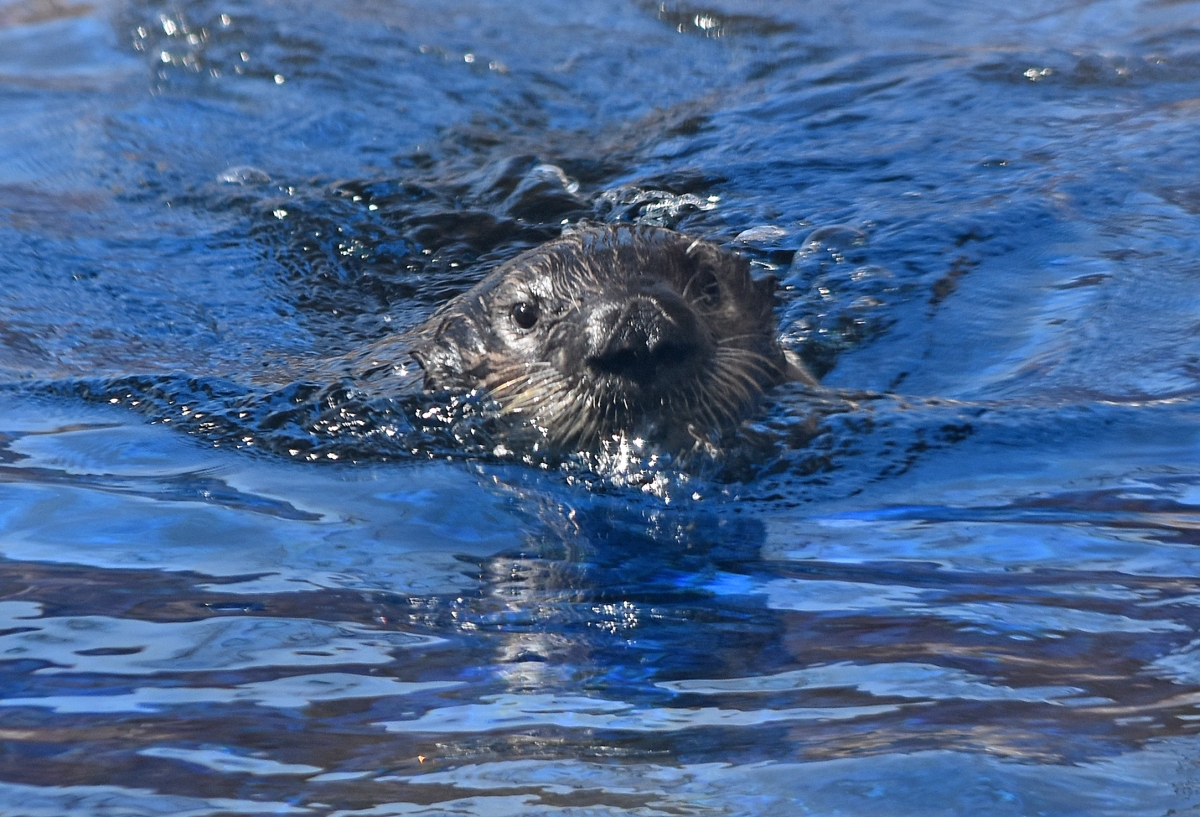Summary of Meet the newest sea Otter at the Detroit Zoo!:
The Detroit Zoo recently acquired a rescued sea otter, currently named “927,” from the Aquarium of the Pacific. The zoo is hosting a naming contest for the Otter, and the winning name will be announced on World Otter Day. The Otter was found stranded in California and was deemed non-releasable by the U.S. Department of Fish and Wildlife. The zoo worked closely with the Aquarium of the Pacific to ensure a smooth transport and acclimation process for the Otter. Nine hundred twenty-seven traveled by plane in a kennel and settled well into his new surroundings at the Detroit Zoo. He interacts with the zoo’s other sea otters, Ollie and Mone, and enjoys his new habitat. The new name for 927 will be revealed on May 31.
Summary:
– The Detroit Zoo recently welcomed a new sea otter named “927” from the Aquarium of the Pacific.
– The Otter was rescued at 3 weeks old and deemed non-releasable by the U.S. Department of Fish and Wildlife.
– The transport and acclimation process required careful planning and coordination with the Aquarium of the Pacific.
– The Otter traveled by plane from California to Michigan in a specially designed kennel.
– Upon arrival at the Detroit Zoo, he was placed in quarantine before being introduced to the Arctic Ring of Life exhibit.
Are you ready to meet the newest addition to the Detroit Zoo? We’re thrilled to announce that a young male sea otter, “927,” has recently joined our family. But this is no ordinary otter – his journey to the Detroit Zoo is fascinating. Let’s dive in and discover the unique and heartwarming story behind his arrival.
At just 3 weeks old, this adorable Otter was found stranded in Carmel-By-The-Sea, California. Unable to find a receptive wild female to care for him, the rescue and rehabilitation team at the Aquarium of the Pacific stepped in to provide him with the love and care he needed. However, after careful evaluation, it was determined that he would not be able to be released back into the wild, making him a perfect candidate for a life in captivity.
Bringing a new sea otter to the Detroit Zoo is no small task. It requires meticulous planning and collaboration with experts in the field. Long before the move, our team began working closely with the animal care staff at the Aquarium of the Pacific to ensure a smooth transition. We applied for a permit from the U.S. Department of Fish and Wildlife, as strict regulations are in place to ensure the well-being of marine mammals in captivity.
While waiting for the permit, the Aquarium of the Pacific staff ensured that 927 had plenty of opportunities to socialize with other sea otters. This helped him develop essential social skills and become comfortable with making new friends. The veterinary staff conducted thorough examinations and tests to ensure his health and prevent the spread of any contagious diseases. This allowed us to shorten the quarantine period at the Detroit Zoo, ensuring that 927 could quickly join the other otters in their large habitat at the Arctic Ring of Life.
Transporting a sea otter, especially one who has never traveled, requires careful planning and consideration of their unique physiological adaptations. To ensure a smooth journey, our own Dr. Ann Duncan traveled to the Aquarium of the Pacific two days before the transport date. The team prepared two large pieces of luggage containing essential medical supplies and medications, just in case. Additionally, two large coolers filled with ice and a day-and-a-half’s food supply were on hand to keep 927 comfortable and nourished throughout the journey.
On the day of travel, we ensured that everything was in place for a safe and stress-free trip. 927 was gently coaxed into an airline kennel designed to meet his needs. The kennel had a plastic insert on the bottom, allowing food and waste to slide away from his fur. As sea otters have a rapid metabolism, offering meals every two to three hours was crucial. Our journey took us from California to Michigan, with a short layover in Memphis. Throughout the trip, we monitored 927 closely, checking on him frequently and providing ample food, water, and ice.
Luckily, 927 proved to be an excellent traveler. He appeared curious, taking in the sights and sounds, but remained calm and relaxed. He eagerly devoured the shrimp, clam, and squid offered at each meal, relishing the taste of his favorite treats. Chewing on cubed ice and enjoying a refreshing water spray made the journey even more enjoyable for him.
Finally, the moment arrived when we landed at the Detroit Zoo. Excitedly, we opened the kennel door and released 927 into a clean quarantine pool adjacent to the exhibit. This allowed him to begin exploring his new surroundings, indulging in his diet, and playing with toys. We gave him a few days to adjust to his new keepers and observe the other otters, Ollie and Monte, through a mesh door. Once he felt comfortable, we introduced him to the larger habitat, where he could frolic and interact with his new friends.
Now, visitors to the Detroit Zoo have the incredible opportunity to witness the playful antics of all three sea otters at the Arctic Ring of Life exhibit. Remember to vote in the donation-based naming contest for our newest Otter – will it be Finn, Eli, Kai, Misu, or Hurley? The name will be announced on World Otter Day, May 31, so don’t miss out on this exciting moment!
In conclusion, the arrival of 927 at the Detroit Zoo is a testament to the dedication and expertise of our team, as well as the collaboration between institutions dedicated to the well-being of sea otters. We couldn’t be happier to have this young Otter join our family, and we hope you’ll visit soon to catch a glimpse of his spirited personality.


